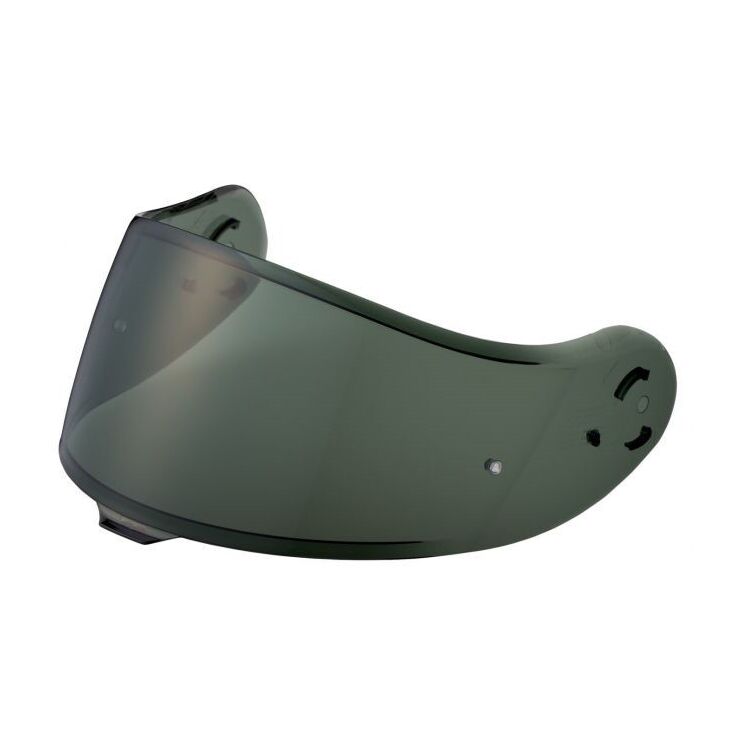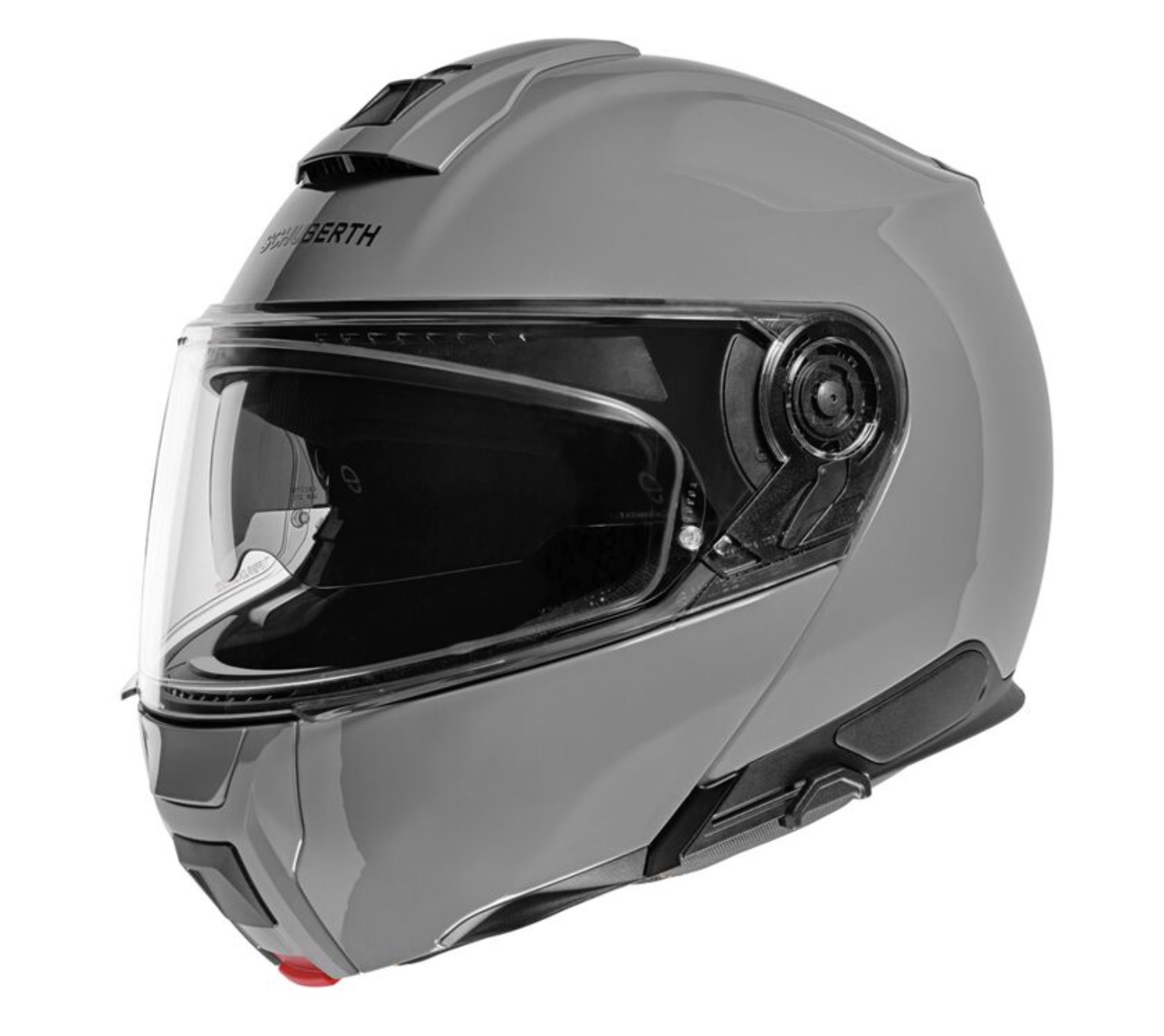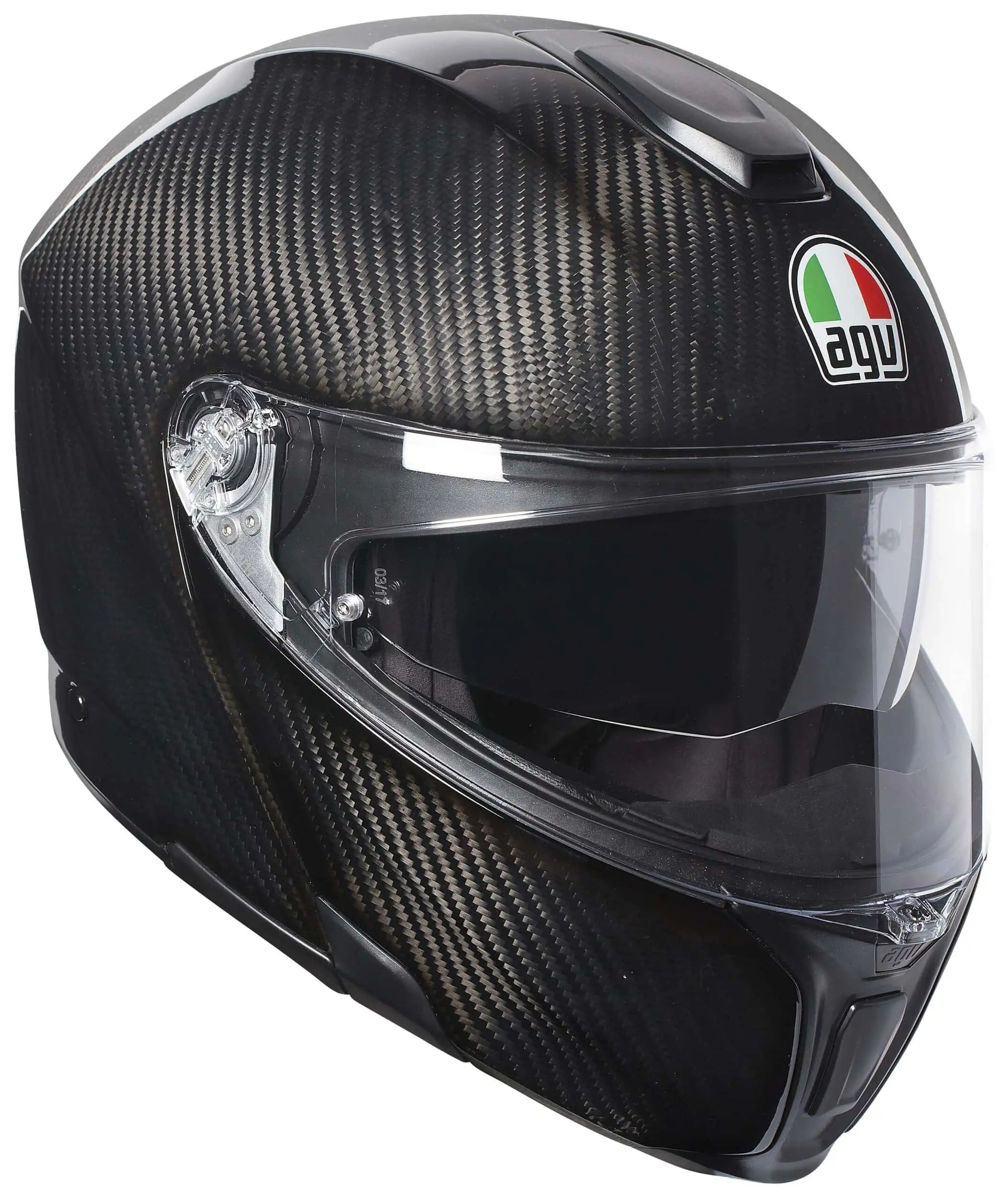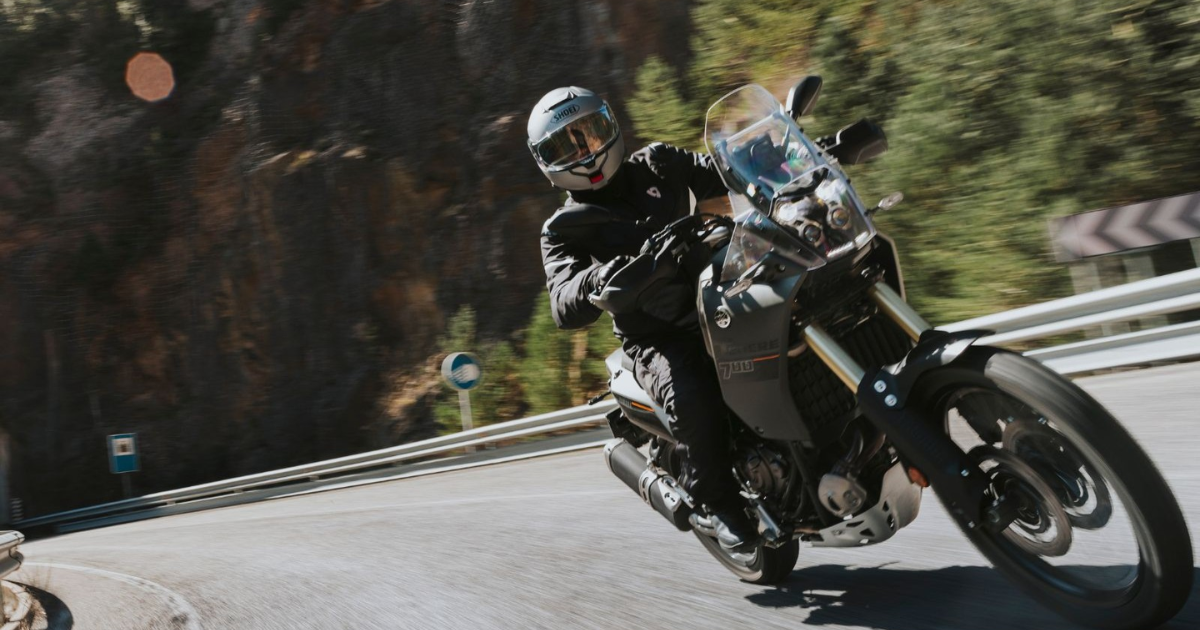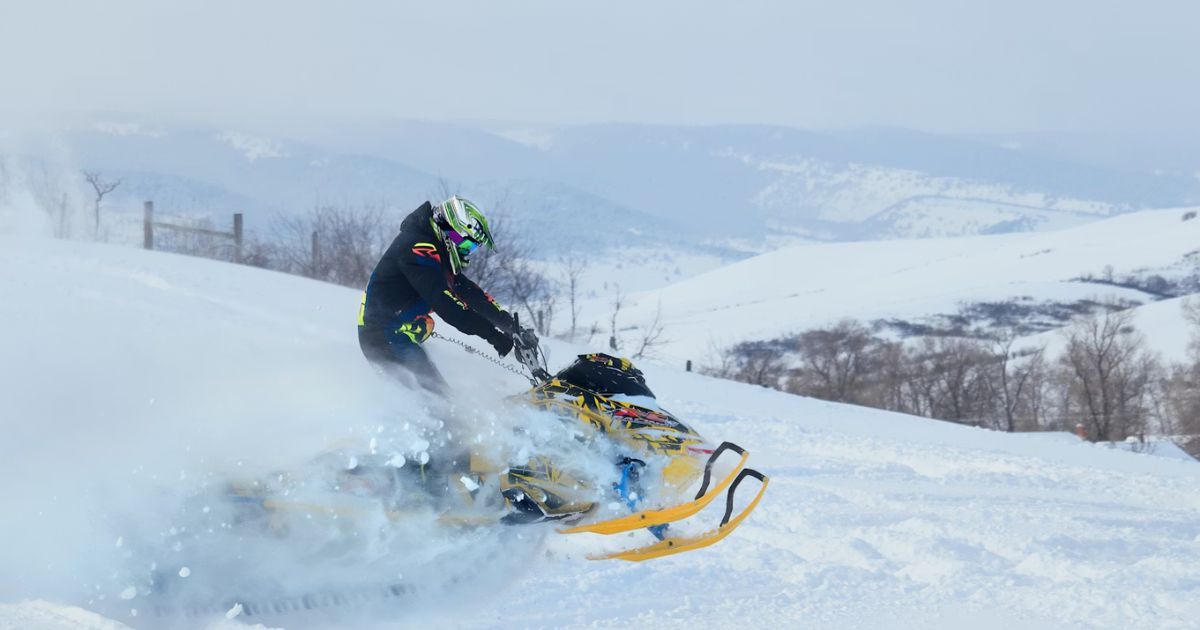
Shoei Neotec 3 vs GT-Air 3: Touring and Daily Riding
left for contents
If you’re deciding between Shoei’s top sport-touring lids, the Neotec 3 and GT-Air 3 are as close as it gets without being the same helmet.
One gives you the flip-up convenience and touring extras, the other shaves weight and keeps things whisper-quiet. Here’s the quick breakdown before we dig into the details.
Description: A premium modular helmet built for long-distance comfort and low noise, with a smooth flip-up chin bar, tightly-sealing visor and wide drop down sun shade. Fits the SRL3 Sena comms system seamlessly. | Description: A premium touring helmet built to disappear on long rides: plush liner, adjustable vents, thick neck-roll and tight sealing visor for that sweet sweet silence and an optically-clear drop down sun shield. Fits the SRL3 Sena comms system seamlessly. |
Pros:
| Pros:
|
Cons:
| Cons:
|
A premium modular helmet built for long-distance comfort and low noise, with a smooth flip-up chin bar, tightly-sealing visor and wide drop down sun shade. Fits the SRL3 Sena comms system seamlessly.
- Comfortable wear all day
- Quiet, aerodynamic performance
- Modular chinbar is smooth, convenient at stops
- Integrated comms & sun visor
- Heavier weight may fatigue neck
A premium touring helmet built to disappear on long rides: plush liner, adjustable vents, thick neck-roll and tight sealing visor for that sweet sweet silence and an optically-clear drop down sun shield. Fits the SRL3 Sena comms system seamlessly.
- Super quiet
- Wind tunnel molded for smoother ride (less fatigue)
- Eyeglass compatible
- Internal sun shade and Pinlock visor
- No modular chin bar
Quick Verdict: Which Lid Wins for You?
Who should buy the Shoei Neotec 3
- You want the convenience of a flip‑up modular helmet with premium build quality.
- You’re willing to pay a little more and tolerate extra weight for the added versatility of a modular and hands‑free comms integration.
For a detailed breakdown of its design, fit, and touring features, see our Shoei Neotec 3 modular helmet review.
A premium modular helmet built for long-distance comfort and low noise, with a smooth flip-up chin bar, tightly-sealing visor and wide drop down sun shade. Fits the SRL3 Sena comms system seamlessly.
- Comfortable wear all day
- Quiet, aerodynamic performance
- Flip-front convenience at stops
- Integrated comms & sun visor
- Faceshield lock is sometimes stiff
- Heavier weight may fatigue neck on long rides
Who should buy the Shoei GT‑Air 3
- You prioritize lighter weight and a more compact shell for reduced neck fatigue on long rides.
- You’d rather save about $150 and don’t need a flip‑up chin bar.
You can find our full hands-on write-up in the Shoei GT-Air 3 helmet review.
A premium touring helmet built to disappear on long rides: plush liner, adjustable vents, thick neck-roll and tight sealing visor for that sweet sweet silence and an optically-clear drop down sun shield. Fits the SRL3 Sena comms system seamlessly.
- Super quiet
- Wind tunnel molded for smoother ride (less fatigue)
- Eyeglass compatible
- Internal sun shade and Pinlock visor
- A bit heavier than carbon‑shell alternatives
- Ratchet strap may irritate throat
The Neotec 3 is worth roughly $150 more if the convenience of a modular chin bar is a priority; otherwise the lighter GT‑Air 3 delivers comparable protection and comfort for less.
With that in mind, let’s dig deeper into how these two helmets stack up in everyday riding. We’ll break down their specs, rider feedback, and key features side-by-side so you can decide which one earns a spot on your head for your next ride.
Specs in a Snapshot
| Specs | Shoei Neotec 3 (Modular) | Shoei GT‑Air 3 (Full Face) |
|---|---|---|
| Weight | ~4.1 lb (size M) claimed; 4.15 lb/1,881 g on product page and ~4 lb 1.5 oz in independent test | ~3.9 lb/1,774 g claimed (size M) independent test lists 3.91 lb |
| Fit/Shape or Sizing | Intermediate‑oval head shape; sizes XS–XXL; three shell sizes. | Intermediate‑oval fit; sizes XS–XXL; three shell sizes. |
| Shell/Materials | Shoei’s Advanced Integrated Matrix (AIM) multi‑fiber shell with multiple EPS densities and a reinforced chin bar | Multi‑Ply Matrix AIM composite shell with multi‑density EPS |
| Safety/Cert (helmets) | DOT certified in North America; European models meet ECE 22.06. | DOT certified (North America); European models are ECE 22.06 and rated 5 stars in the UK SHARP tests. |
| Ventilation/Weatherproofing | Redesigned front and top vents, rear exhaust and smoother side panels; flip‑up face shield and Pinlock‑ready CNS‑3C visor. Drop down sun visor. | Enlarged dual intake vents on chin and forehead with rear exhaust, Pinlock‑ready CNS‑1C shield. Drop down sun visor. |
| Electronics/Comms Ready | Built‑in mounting points for the optional Sena SRL3 system; micro‑ratchet chin strap; no electronics supplied. | Hidden pockets for Shoei Comlink/Sena SRL3 communicator; micro‑ratchet chin strap; no electronics supplied. |
| Warranty | 5‑year warranty from purchase (7 years from manufacture). | 5‑year warranty from purchase (7 years from manufacture). |
| Street Price (typical) | ~$900–$1,000 for solids and graphics. | ~$750–$850 for solids and graphics. |
Neotec 3 or GT-Air 3? Here’s Your Fit
Shoei Neotec 3
- You value the ability to flip up the chin bar for conversations, fueling stops or quick sips without removing your helmet.
- You have a medium to long‑oval head shape; owners report the modular design accommodates eyeglasses easily and the interior is plush and snug.
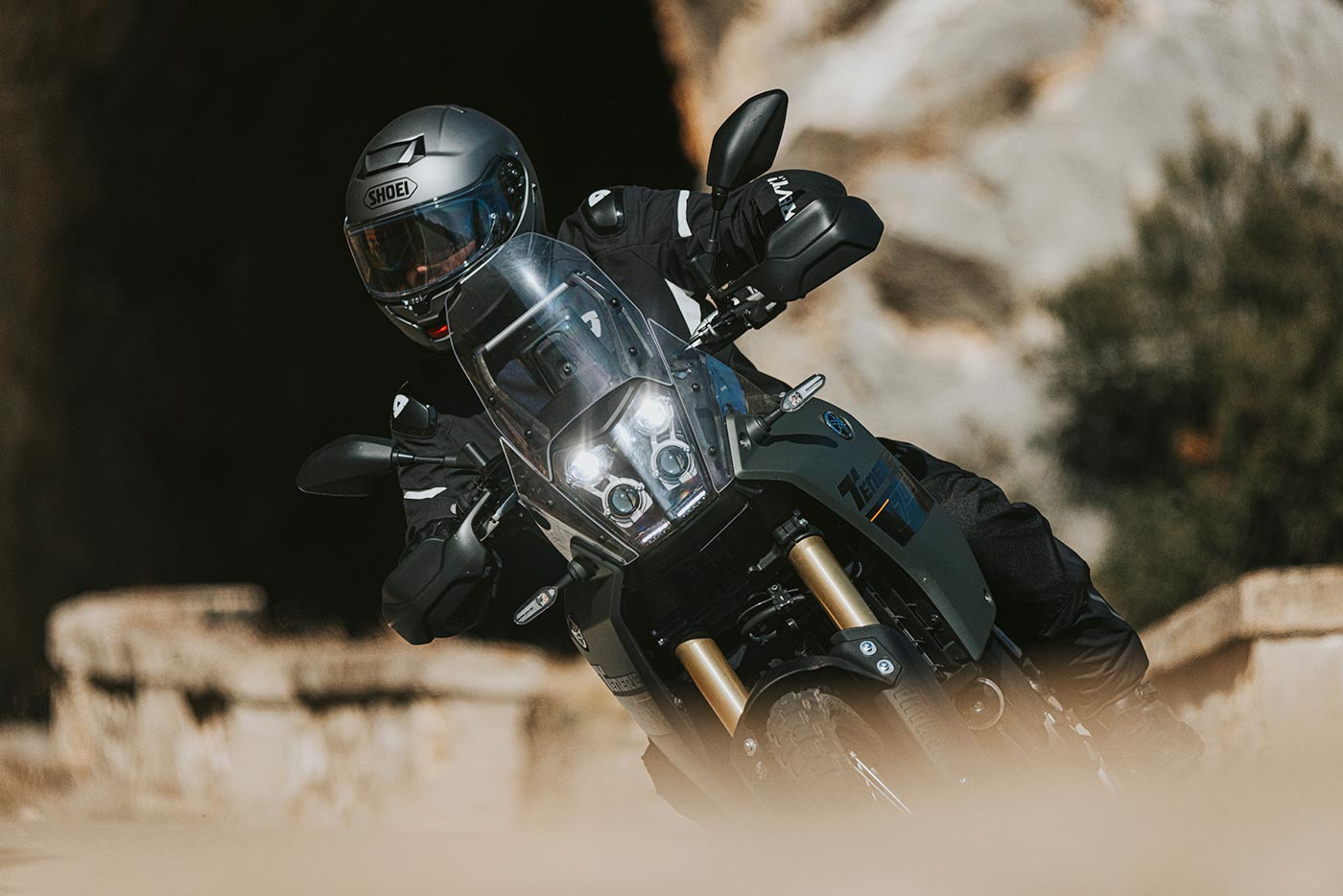
Shoei GT‑Air 3
- You prioritize a lighter, more compact helmet that reduces neck strain on long rides or at highway speeds.
- You want a quiet full‑face touring helmet with outstanding ventilation, a large internal sun visor and an aerodynamic shell engineered in a wind tunnel.
- You frequently ride in hot climates; riders note its dual‑intake chin vent and multi‑stage forehead vent flow lots of air without creating turbulence.
- You don’t need a flip‑up chin bar; the full‑face design offers slightly better structural integrity and lighter weight.
- You’d rather spend less while still getting premium materials, a plush Max‑Dry interior, emergency quick‑release cheek pads and a five‑year warranty.
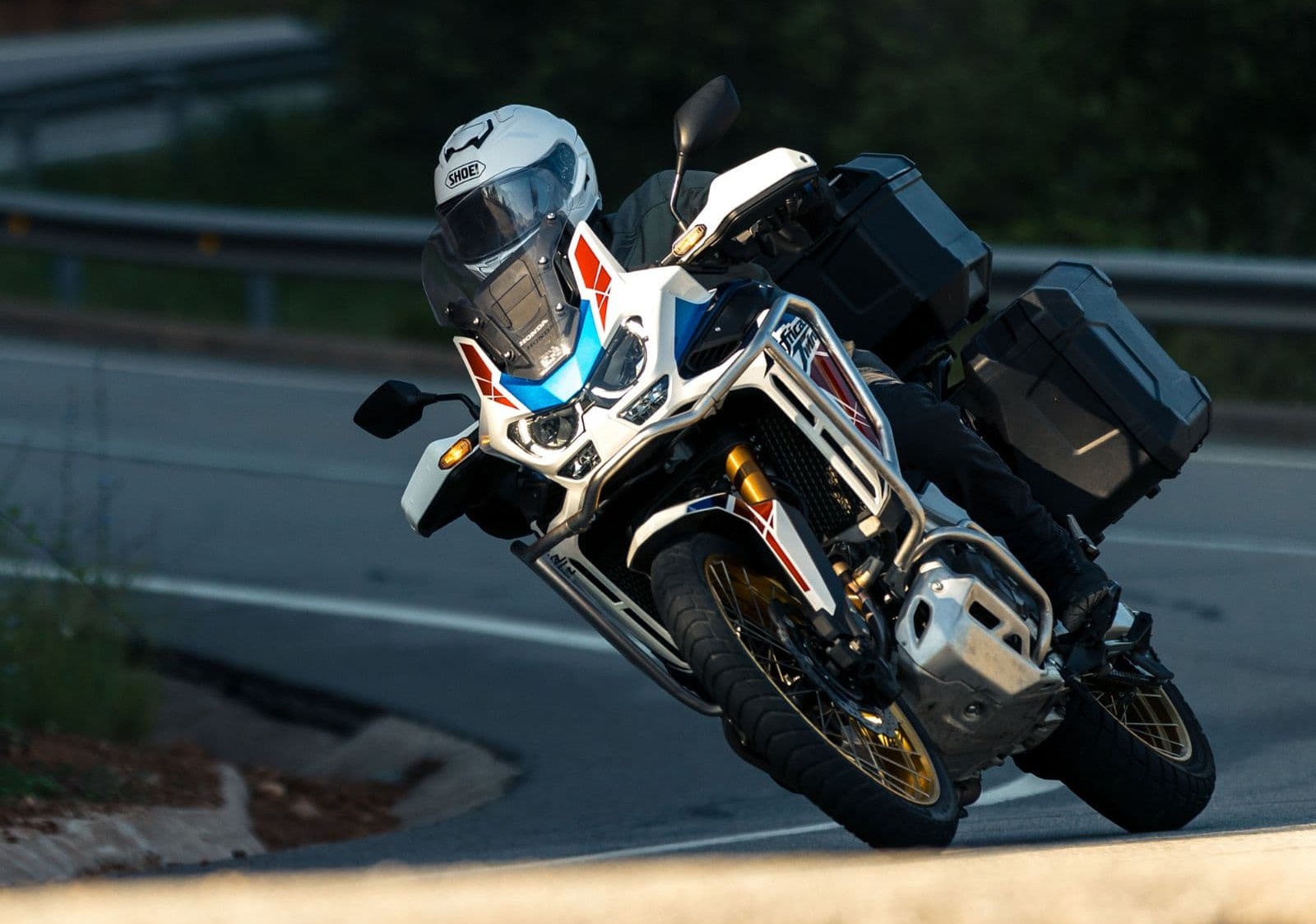
From the Saddle: Rider Impressions
Shoei Neotec 3
- Feels more refined than its predecessor, with a central visor lock.
- Flip-up mechanism operates smoothly; interior padding is luxuriously soft.
- Chin curtain and noise-isolating cheek pads help keep wind noise subdued for a modular, though still louder than a full-face.
- Weighs roughly 4 lb; weight is noticeable on long highway rides, and the optional Sena SRL3 adds more heft.
- Cycle News tester found it stable and well-ventilated, but neck fatigue set in after about an hour with SRL3 installed.
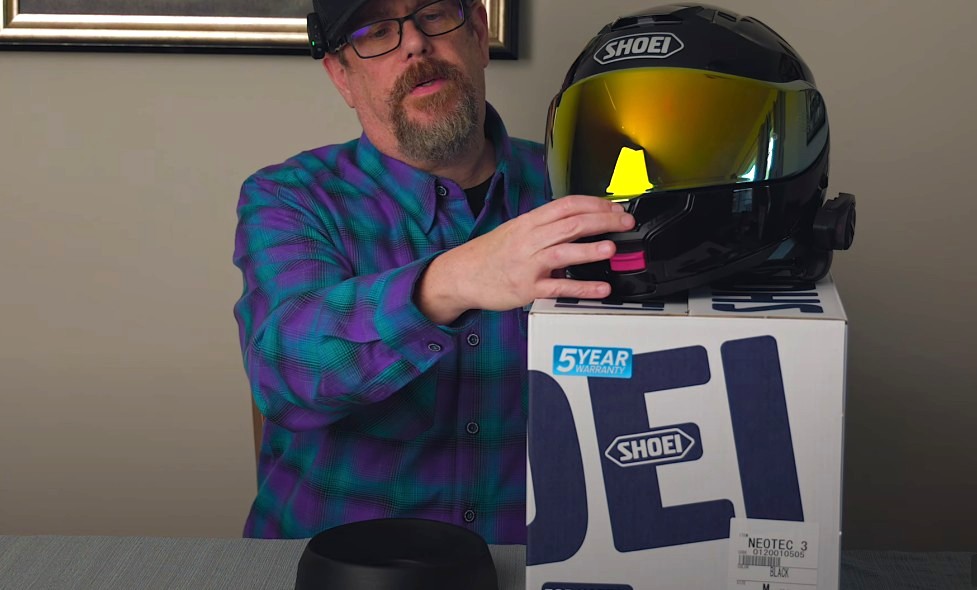
Shoei GT-Air 3
- Considered exceptionally quiet for a ventilated touring helmet, with excellent comfort–ventilation–weight balance.
- Offers a strong balance of quietness and airflow.
- Improved chin vent and two-stage forehead vent deliver airflow “like flipping on air conditioning,” without whistling.
- Feels noticeably lighter than its predecessor and much lighter than modular helmets, reducing neck strain on long rides.
- Extended QSV-2 sun visor drops lower, reducing glare; some still wish for transition or darker tint options.
- 3D Max-Dry interior is comfortable and wicks sweat quickly.
- Minor drawbacks: side-mounted sun visor latch can be fiddly with gloves, and it leaves a small light gap at the bottom.
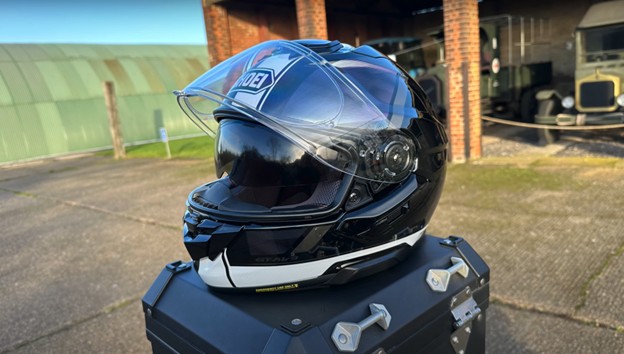
Feature Face-Off: How They Stack Up
Noise at highway speeds
Wind‑tunnel development helps both helmets maintain low noise levels, but the GT‑Air 3 has the edge. Its full‑face shell is inherently quieter than a modular design and the smoother rear spoiler helps reduce turbulence.
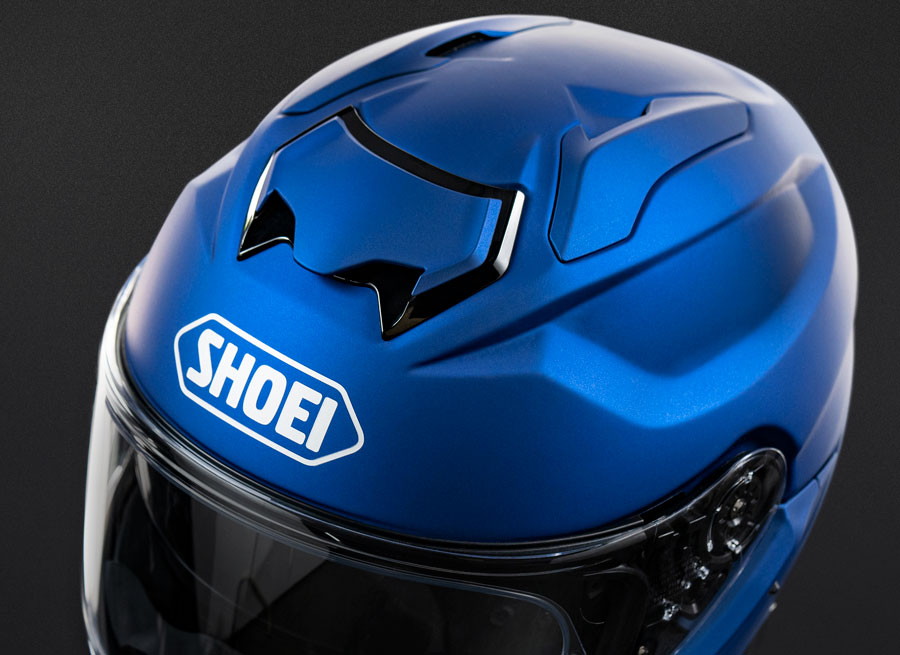
Riders testing the Neotec 3 report it is quieter than the Neotec 2 and comparable to some full‑face helmets, but a slight whooshing is still noticeable when the chin bar hinges meet the shell. The Neotec’s chin curtain and noise‑isolating cheek pads do a good job sealing gaps, yet the added seams create more potential paths for noise than the GT‑Air’s one‑piece shell.
If minimizing wind noise is your priority, the GT‑Air 3 wins.
Weight & fatigue
Weight is the biggest practical difference.
The Neotec 3’s modular mechanism adds about a quarter‑pound over the GT‑Air 3, and owners with the optional communicator report the total weight nearing 4.35 lbs. On long days, this extra weight can contribute to neck fatigue, especially for smaller riders or those on upright bikes that catch more wind.
The GT‑Air 3, at around 3.9 lb, feels noticeably lighter when tilting your head to check blind spots and remains stable even when turning into crosswinds.
For riders sensitive to helmet weight, the GT‑Air 3 is the better choice.
Ventilation in heat
Both models improve airflow compared with their predecessors.
The Neotec 3 features a redesigned defogger vent in the chin bar, large intake vents on the top and multiple exhaust ports. Riders report that even with the chin bar down, air flows through the helmet effectively and the Pinlock‑ready visor resists fogging. When flipped open, the chin bar further reduces heat buildup at stops.
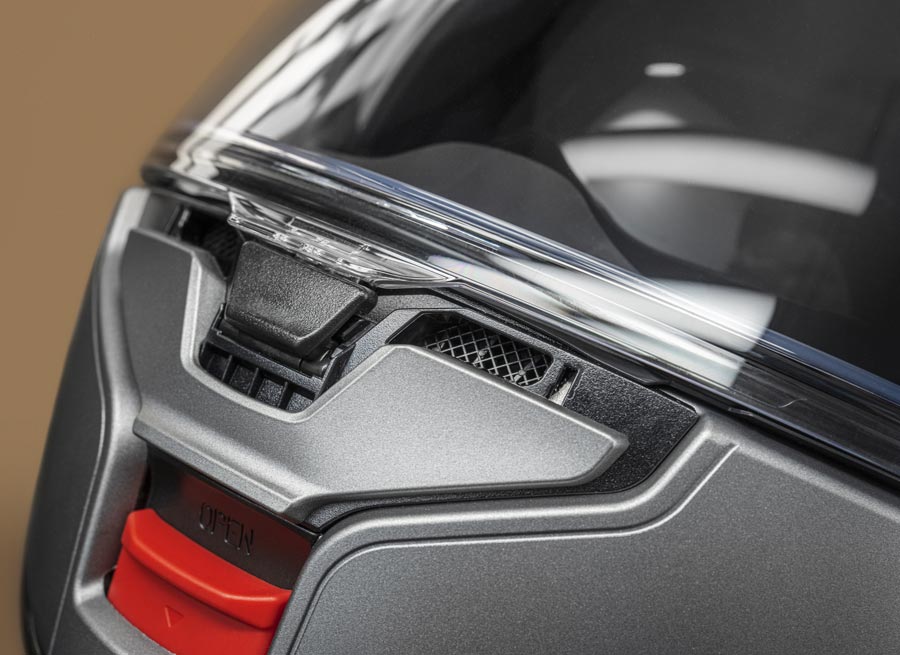
The GT‑Air 3 uses enlarged dual‑intake vents on the chin and a two‑stage forehead vent that can be fine‑tuned for different conditions. Independent testers note that the GT‑Air 3 flows more air than the Neotec 3 while remaining quiet, making it better for summer rides or humid climates.
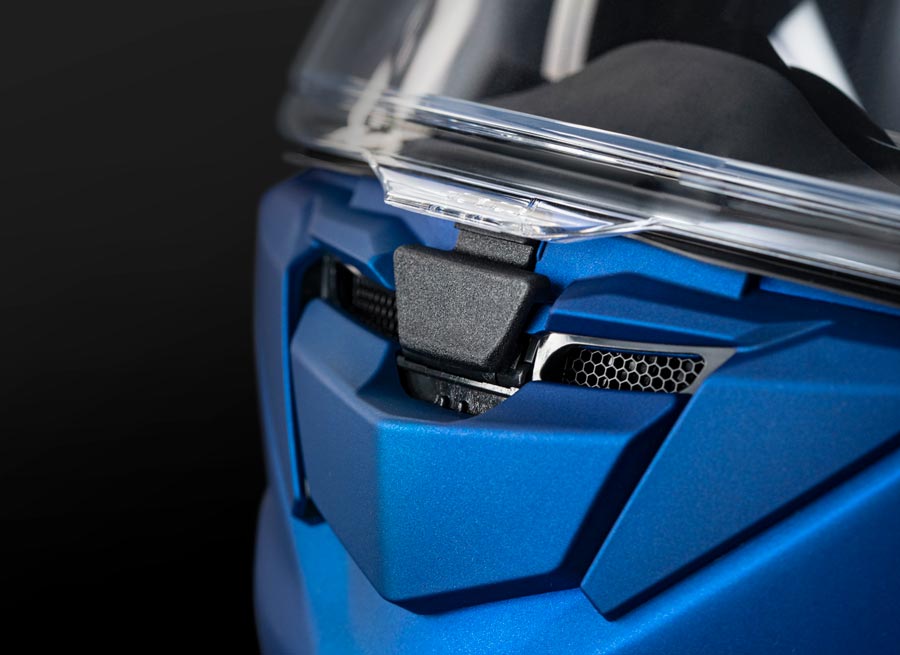
Both also appear in our best touring motorcycle helmets for long rides roundup for their comfort, stability, and long-haul capability.
Visor & sun shield usability
Both helmets come with Shoei’s Pinlock-ready CNS-series clear shield and include a Pinlock insert to prevent fogging.
The Neotec 3 uses the CNS-3C shield, while the GT-Air 3 uses the CNS-1C; both provide a wide field of view. The integrated QSV-2 sun visor has been enlarged on both models, with the Neotec’s sliding lever positioned on the left side of the shell and the GT-Air’s along the lower left edge for easy access.
Both helmets now use a center-mounted visor lock, which creates a tight seal and balanced pressure across the visor. Some riders note that closing requires pressing firmly at the center rather than at the sides, but the design provides excellent weather sealing and security once latched. The Neotec’s modular hinge system makes its mechanism slightly heavier, while the GT-Air benefits from being lighter as a full-face.
Neither helmet comes with an automatically tinting visor, so riders still need to install or swap in a photochromic shield if they want transitional tinting.
Tool‑free, quick‑release visor built for riders who need crystal-clear, fog‑free visibility and strong resistance to weather, debris, and UV—designed specifically for Neotec 3 helmets. | Tool‑free, quick‑swap visor built for GT‑Air 3 riders who demand fog‑resistant clarity, strong UV protection, and smooth, centrally‑mounted operation. |
|
|
|
|
Tool‑free, quick‑release visor built for riders who need crystal-clear, fog‑free visibility and strong resistance to weather, debris, and UV—designed specifically for Neotec 3 helmets.
- Clear, distortion-free view with >99% UV protection
- Fast, tool-free installation for quick swaps
- Fog-resistant when used with Pinlock insert
- Shields from wind, rain, insects, and debris
- Replacement fog insert sold separately
- Tint options may be limited in certain regions
Tool‑free, quick‑swap visor built for GT‑Air 3 riders who demand fog‑resistant clarity, strong UV protection, and smooth, centrally‑mounted operation.
- Crystal‑clear, wide‑angle view with distortion‑free optics
- Quick-release, tool‑free swap saves time on the road
- Fog‑resistant when paired with Pinlock insert—clear view in changing conditions
- Effective defense against wind, rain, and debris with 99% UV protection
- Pinlock insert sold separately for fog protection
- Mirrored or tinted versions may cause glare or reflect your face
Comms‑ready fitment
Shoei collaborated with Sena to create the SRL3 Bluetooth communicator, which mounts seamlessly inside both helmets using built‑in pockets and wiring channels. The Neotec 3 and GT‑Air 3 each have pre‑formed recesses for speakers and a battery, and the micro‑ratchet strap provides a quick buckle even with gloves.
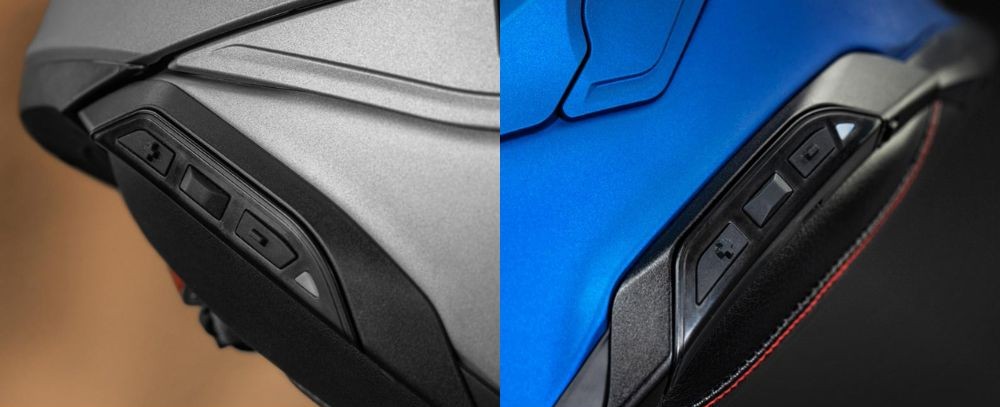
Because the Neotec’s chin bar is modular, the wiring path is slightly more complex; some owners note that the chin bar motion can pinch wires if installation isn’t careful. The GT‑Air’s fixed shell makes installation simpler.
In either case, the optional SRL3 (sold separately) supports mesh intercoms, voice prompts and noise‑cancelling microphones. Riders who plan to run third‑party units like Cardo can still mount them using adhesive pads, though the Shoei‑Sena integration is tidier.
Build & finish
Shoei is known for meticulous quality control, and both helmets reflect that reputation. The AIM shell uses layers of fiberglass and organic fibers for a stiff yet lightweight structure. Paint and graphics are rich and durable, seams are tight and interior materials feel plush.
The Neotec 3’s modular hinge is smooth and the chin bar locks securely in both raised and lowered positions. Its stainless‑steel micro‑ratchet strap feels sturdy.
The GT‑Air 3, lacking a hinge mechanism, feels slightly more rigid and has a lower center of gravity on the head.
Emergency quick‑release cheek pads come standard on both models (a safety feature to aid paramedics in an accident). Owners rarely report defects, and both helmets come with a five‑year warranty, reflecting the brand’s confidence.
Value for Money: Is the Upgrade Worth It?
The price gap between the Neotec 3 and the GT‑Air 3 is about $150, though graphics and limited‑edition finishes can push that gap wider.
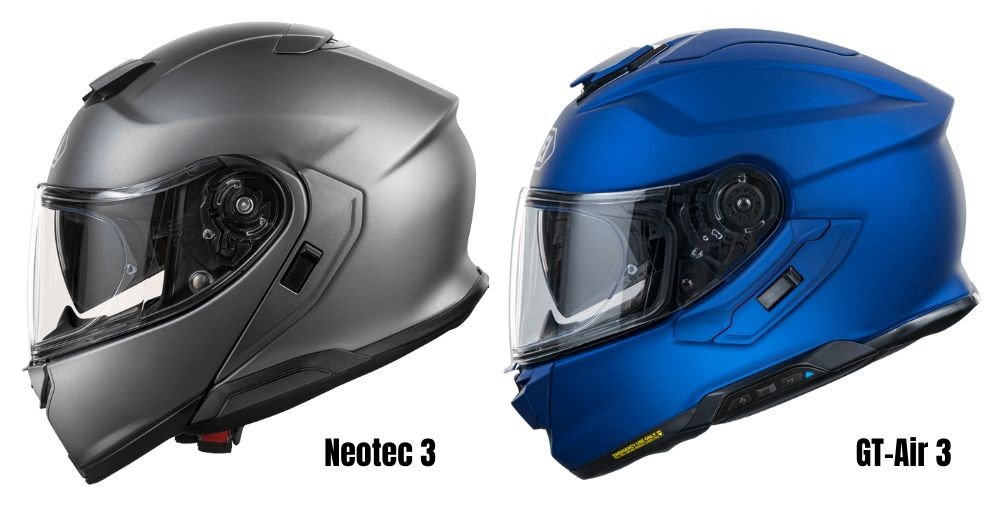
In return for the higher price, the Neotec 3 provides modular flexibility, an extra piece of hardware (the flip‑up chin bar) and convenience features. It’s a superb choice if you frequently communicate at gas stops, wear glasses or simply enjoy the ability to lift the chin bar in traffic.
For touring, the ability to open the helmet at rest stops without removing it can enhance comfort and conversation. That said, you pay for this convenience in weight: riders sensitive to neck fatigue may find the GT‑Air 3’s lighter full‑face design more comfortable, especially on sport‑touring bikes that place more load on the neck.
The GT‑Air 3, at around $750–$850, offers nearly all of Shoei’s comfort and safety technology while being lighter and quieter. Its ventilation system is slightly more effective in hot weather and its one‑piece shell should provide marginally better structural integrity.
For many riders, the extra $150 for the Neotec 3 is justified only if the modular design is essential. Otherwise, the GT‑Air 3 represents a better value.
If modular versatility is a priority, you might also want to explore our best modular helmets guide for other top-rated flip-up options.
Other Helmets Worth a Look
Schuberth C5 (Modular) – The C5 is a premium ECE 22.06‑rated modular helmet with a carbon‑reinforced shell, integrated SC2 comms and a reputation for being one of the quietest modulars. It’s lighter than the Neotec 3 but similarly priced; ideal if you want high‑end modular features and top‑notch noise isolation.
The quietest touring helmet money can buy, kitted out with all the features you expect for those long days in the saddle.
- Modular flip up chin bar
- Drop down sun visor
- Space for integrated comms unit
- Many colorway options
- DOT certified, with ECE in EU
AGV Sportmodular (Modular) – A full carbon‑fiber modular helmet weighing around 3.0 lb. It’s one of the lightest modulars on the market and is quieter than many but lacks some of Shoei’s plush interior feel. Best for riders who want carbon weight savings and are willing to trade a bit of comfort.
A feather‑light, full‑carbon flip‑up helmet blending MotoGP‑level safety with sleek sportbike aesthetics in a modular package—ideal for riders who want touring comfort without the bulk.
- Comes remarkably light for a modular design
- Exceptional peripheral vision with 190° field of view
- Reversible liner offers one side for hot and one for cold
- Aerodynamic profile reduces buffeting at highway speeds
- Slight wind noise typical of modular helmets
- Chin‑strap rings and latch can be fiddly with gloves
Arai Signet‑X or RX‑7X (Full face) – Arai’s touring‑oriented helmets offer excellent ventilation and hand‑built quality. They use a proprietary shell shape and a traditional double‑D ring but are renowned for fit and crash protection. Consider one if you prefer a full‑face without an internal sun visor and want top‑tier safety.
Purpose-built for long‑oval heads, the Arai Signet‑X delivers exceptional comfort, top-tier Snell-rated protection, and robust ventilation—all without pressure points or fit compromises.
- Long-oval: no forehead hotspots
- Lightweight: less fatigue on long rides
- Excellent airflow: stays cool in heat/traffic
- Snell M2020/DOT; adjustable padding
- Vent-heavy design can be noisy
- Face-shield latch is stiff with gloves
Frequently Asked Questions
Is the Shoei Neotec 3 ECE 22.06 certified?
North‑American‑market Neotec 3 helmets are DOT certified. Shoei sells an ECE 22.06 version of the Neotec 3 in Europe. It’s slightly lighter than the DOT version and carries the ECE safety rating.
How does the Neotec 3’s weight compare to the Neotec 2 or GT‑Air 3?
The Neotec 3 weighs about 4.1 lb in medium (roughly 4.03 lb–4.15 lb). That’s only slightly heavier than the outgoing Neotec 2 but about 0.2 lb heavier than the GT‑Air 3 (3.91 lb). Adding the optional Sena SRL3 communicator increases weight by another quarter‑pound.
Does the GT‑Air 3 include a communication system?
No. Both helmets are designed to accept Shoei’s Sena SRL3 communicator but the unit is sold separately. The shells include cut‑outs for speakers and a microphone, and wiring channels for a tidy installation.
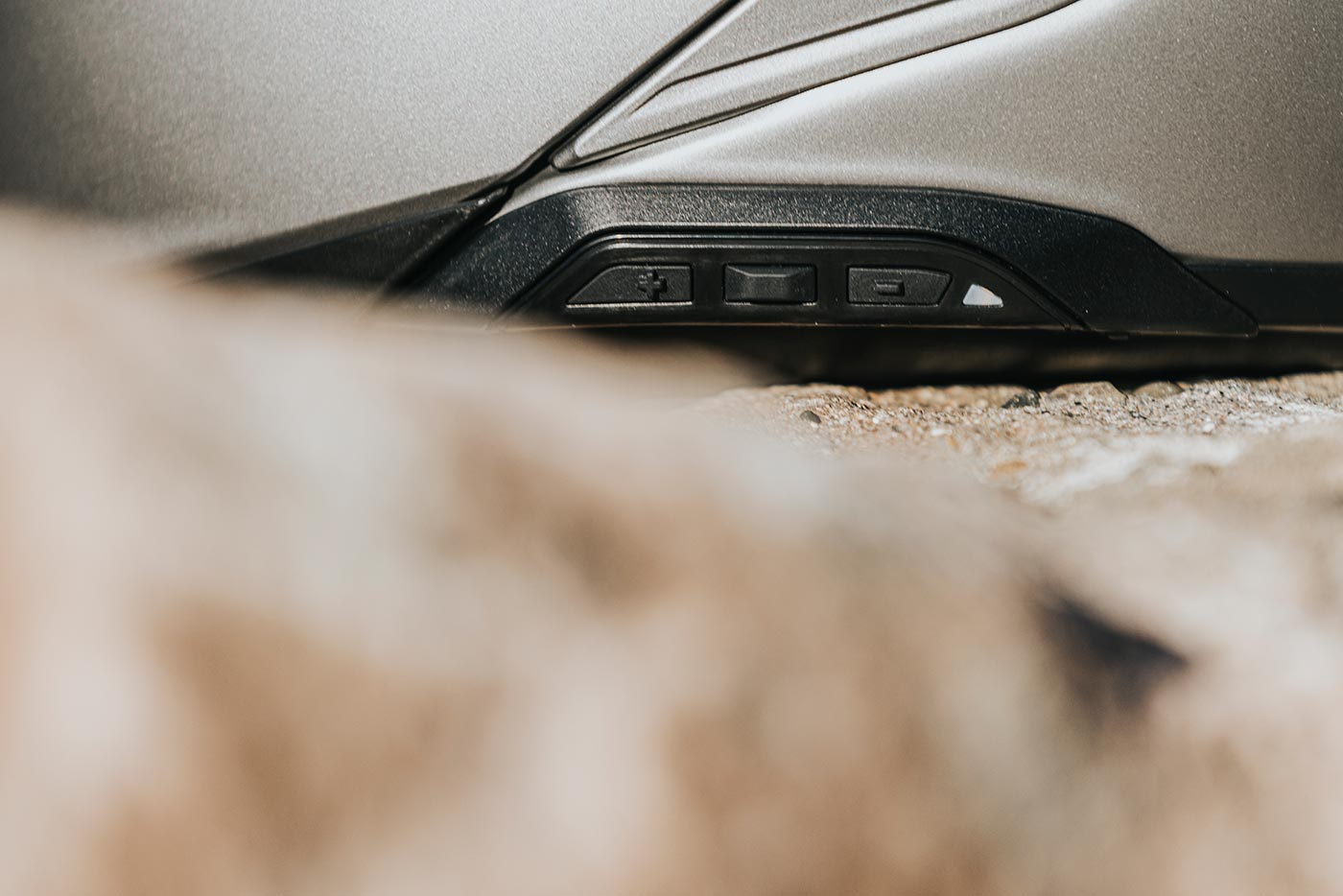
Which helmet is quieter?
Most riders find the GT‑Air 3 marginally quieter than the Neotec 3 because it lacks a modular hinge and has a smoother profile. However, the Neotec 3 is still regarded as quiet for a modular and features a redesigned chin curtain and cheek pads to block noise.
Can you wear glasses with these helmets?
Yes. Both helmets feature removable cheek pads and an intermediate‑oval interior that accommodates most eyewear. Riders with larger frames report a slightly easier fit in the Neotec 3 when the chin bar is raised for donning and doffing.
What’s the difference between the Neotec 3 and the GT‑Air 3 in terms of sun visor?
Both use Shoei’s QSV‑2 internal sun visor, but the Neotec 3’s lever sits near the left ear and can be operated even with the chin bar flipped up. The GT‑Air 3’s lever is on the lower left edge; riders with thicker gloves may need to feel for it. The sun visor drops slightly lower in the GT‑Air 3, offering more coverage around the nose.
Not sure your comms unit will fit?
Sometimes the perfect helmet comes with a catch—it’s designed around a specific Bluetooth unit. That can make it tough if you prefer something different. With an adapter from Tubs Jackson, you can get a factory fit for any comms units on helmets you actually want to ride in.
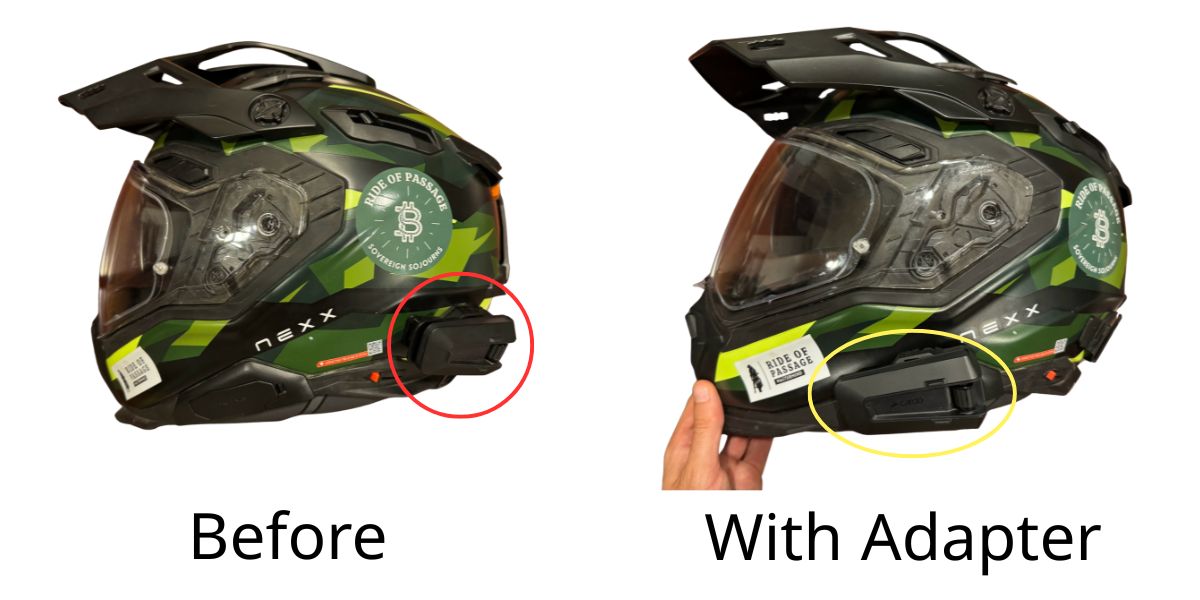
Tubs Jackson is a weird name, I know, but I have their adapter in my Nexx X.WED3 helmet and it’s rock solid. Much nicer than reaching way back to where I had the sticky mount before. I wish I’d thought of this idea.
Tip: Get FREE SHIPPING just by buying here or using code BETTERONTHEROAD at checkout.
Related

Carbon Fiber Modular Helmets: Ultimate Flip-Up Lids
Discover carbon fiber modular helmets that deliver flip-up convenience, lightweight strength, and serious protection for every ride.



